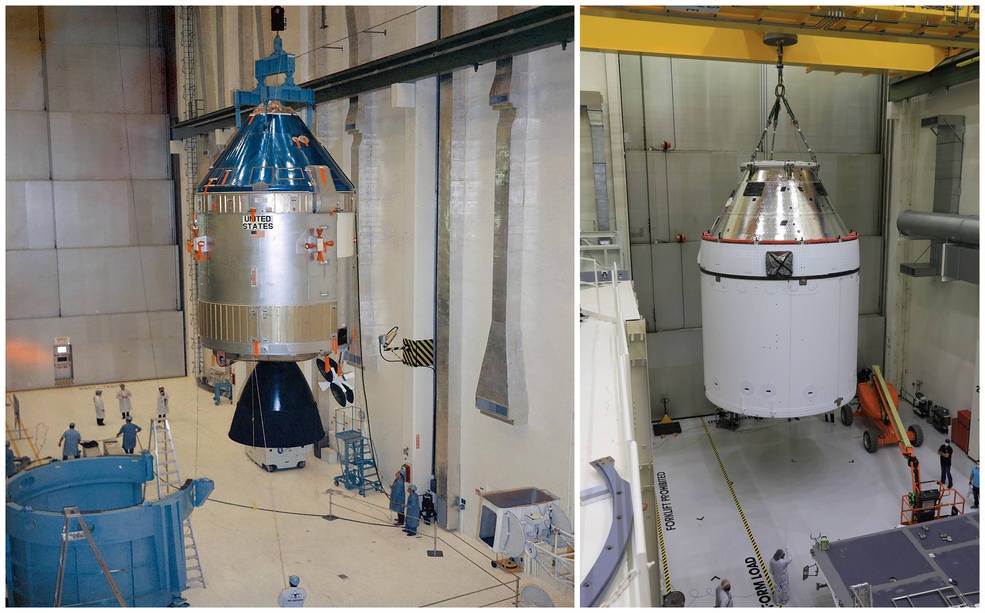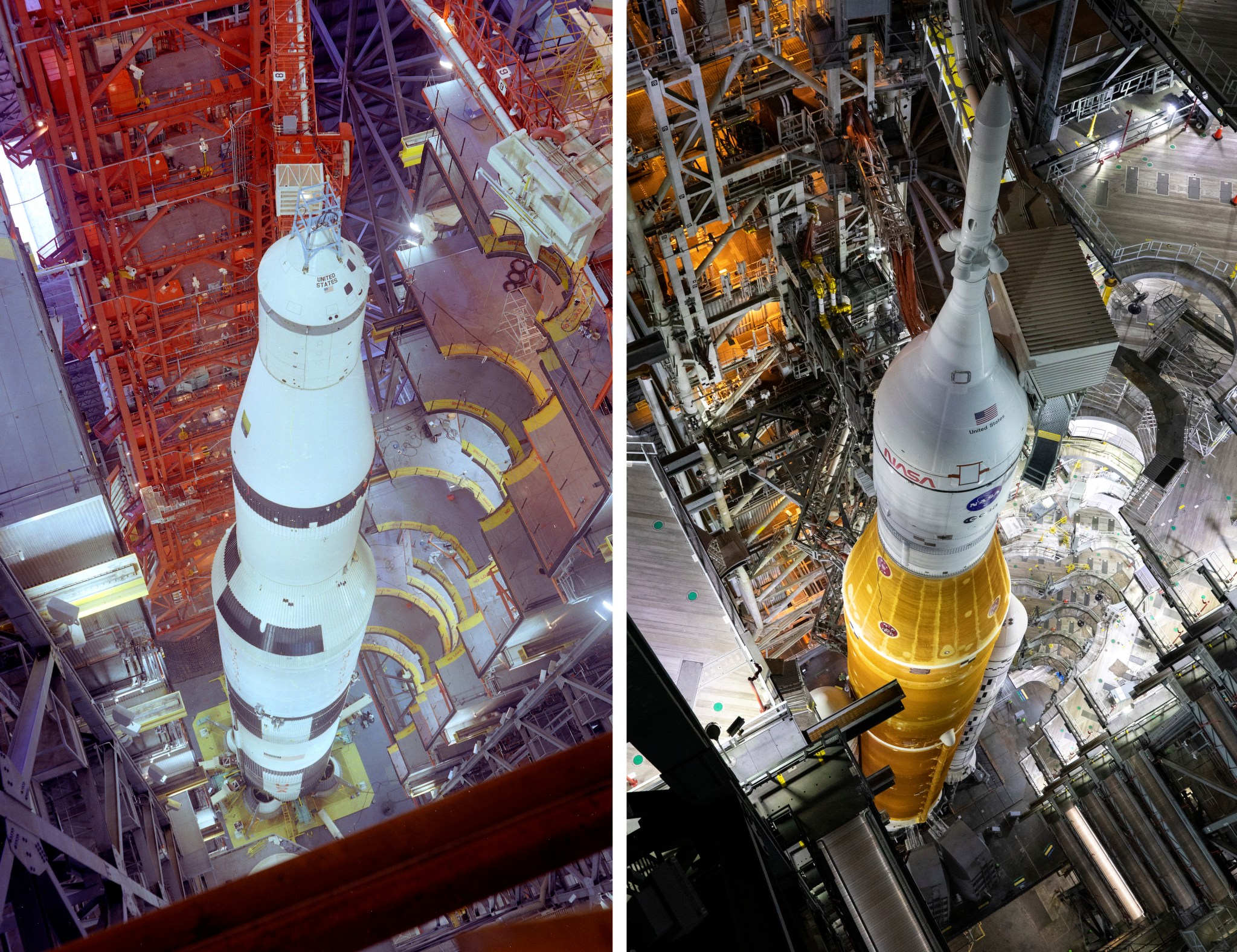Apollo to Artemis

At the system level, there are significant differences between Orion and Apollo. The Orion elements are larger in scale, offering greater volume to accommodate larger crews and provide greater range. Where Apollo was designed to transport three crew for 14 days, Orion can transport up to four crew for 21 days, and is designed to be versatile and support a variety of destinations.
Orion has 30 percent more habitable space than Apollo, allowing more room for the crew. Orion is also designed with many more crew comforts to support longer duration spaceflight, such as a galley for preparing meals and a functioning waste management system. Crew exercise was very difficult inside Apollo, as the environmental control system was not designed to compensate for crew workouts. However, Orion provides full exercise capability, and is also designed to maximize available privacy and mitigate noise and odors, enabling longer, healthier, and more hygienic missions. Modern features have also been incorporated into Orion, including composite materials, 3D printed parts, solar arrays, and an improved heat shield design. Orion also has over 1,200 sensors, and the crew module has a glass cockpit with screens and user-interfaces reflective of our digital age, rather than Apollo’s analog inputs and outputs.
Where Apollo ushered in the era of computers and software, Orion capitalizes on decades of computing advancements. Orion’s guidance, navigation, and control (GN&C) system is comprised of flight computers, displays and controls, optic measurement, and advanced software. Compared to Apollo’s single flight computer, Orion has two simultaneously operating redundant flight computers that each include two redundant computer modules, giving it a total of four redundant systems. In addition, just one of Orion’s redundant computers is only 75 percent the weight of the sole computer aboard Apollo, has 128,000 times more memory and is 20,000 times faster. Orion’s computing redundancies not only improve safety, they also improve data collection and processing power.

inside the Manned Spacecraft Operations Building (now the Neil Armstrong Operations and Checkout Building) at NASA’s Kennedy Space Center in Florida on Jan. 31, 1969. To the right is the Orion spacecraft being lifted out of a processing work stand and onto a transporter inside the Neil Armstrong Operations and Checkout Building on Jan. 14, 2021.
Apollo’s flight software was only capable of calculating the spacecraft’s trajectory; it would not adjust it real-time in space based on sensor input, as Orion can. In contrast to the manual operation necessary on Apollo, Orion’s software-driven avionics and other computers provide situational awareness and autonomy. Orion automates functions, thereby freeing astronauts for other tasks, as they will not have to frequently monitor spacecraft systems and verify their trajectory. The software also enables full uncrewed test flights and checkout before a mission is crewed, drastically increasing crew safety.
Relative to Apollo, Orion’s systems have also been upgraded to account for the effects of space radiation exposure, an environmental hazard that is better understood since the Apollo missions. To counter the radiation hazard, electronic components within the computers are radiation hardened. This is something Apollo did not account for as missions were flown during a period of minimum solar activity.

Space Center in Florida in preparation for roll out to the launch pad. On the right, the 322-foot-tall Space Launch System rocket and Orion spacecraft for the Artemis I mission stands inside the VAB ahead of rollout for the mission’s wet dress rehearsal.
The power system on Orion enables an entirely new class of missions when compared to Apollo. Orion provides a renewable power supply using solar cells to capture energy from the Sun, where Apollo generated power using a finite supply of hydrogen and oxygen loaded at the start of the mission to harness energy as they combined in a fuel cell. Free from the constraint of a resource-limited power supply, Orion pioneers more distant crewed exploration and sustains extended mission durations.
Orion’s parachutes may also look similar to those used during the Apollo-era, but through testing and analysis, technicians have developed Orion’s parachutes to be lighter, their performance better understood, and more capable than Apollo’s. Engineers have figured out how to manage the stresses on the system during deployment more efficiently, decrease the mass of the parachutes by using high tech fabric materials rather than metal cables for the risers that attach the parachute to the spacecraft, and improve how the parachute is packed into Orion so they deploy more reliably.
There are a number of differences between Orion and Apollo’s crew module uprighting system (CMUS), the airbags responsible for uprighting the crew module in the case of an inverted splashdown. Due to Orion’s larger diameter as compared to Apollo, five airbags are required to upright Orion, whereas the smaller Apollo only required three airbags. The Apollo airbags were inflated using a compressor and solenoid valves, while Orion’s CMUS uses pyro-valves and helium to inflate the airbags. As a result, the Orion CMUS inflation system is lighter than the Apollo system.























